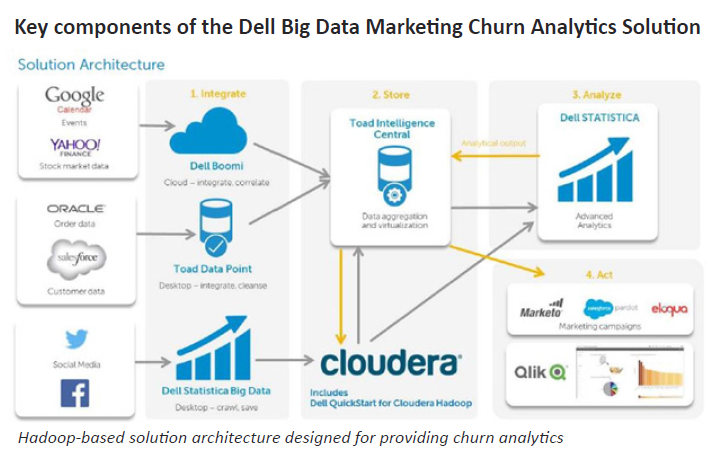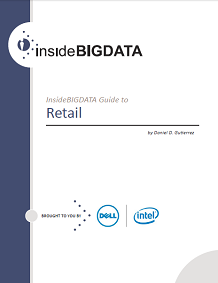This article is the second in an editorial series with a goal of directing line of business leaders in conjunction with enterprise technologists with a focus on opportunities for retailers and how Dell can help them get started. The guide also will serve as a resource for retailers that are farther along the big data path and have more advanced technology requirements.
In the last article, we provided a high-level view of how the retail industry has been influenced by big data technologies. The complete insideBIGDATA Guide to Retail is available for download from the insideBIGDATA White Paper Library.
Download the insideBIGDATA Guide to Retail
How Big Data is Being Used in Retail
Today, the customer expects that a retailer knows their full history: purchases, preferences and promotions, regardless of channel or device. Harnessing data at a very large scale, i.e. every interaction, rather than each transaction, enables creation of a data-driven, robust customer profile that reveals their preferences and aspirations. Big data enables all of these customer touch points to be assembled into a consolidated profile—a single, comprehensive view of the customer which may then be used to identify sales opportunities that historically have been managed through sales associate relationships. Many high-end retailers maintain strong personal relationships with customers, but that model does not scale.
The appeal of big data in the retail industry is clear. Organizations like the National Retail Federation (NRF), the industry’s largest advocacy organization, have embraced big data early on—with conferences having keynote addresses, breakout sessions and roundtable discussions, all holding a data-centric view for the future of the industry.
 Here are a few common use case examples related to the retail industry where the benefits of big data technology can be realized:
Here are a few common use case examples related to the retail industry where the benefits of big data technology can be realized:
Customer Relationship
- Enablement of a 360-degree customer view
- Recommendation systems to predict customer preferences
- Point-of-sale transaction analysis in order to target retail promotions designed to make customers buy
- Personalization: evolving the purchase funnel, including personalized pricing and offers
Marketing and Promotional
- Improved A/B testing
- KPIs such as loyalty metrics, reach, engagement, sentiment, customer service
- Event correlation to store traffic
- Twitter “BUY” button—extending e-commerce to social media for a new genre of retailers
- Ad targeting to determine how to increase the efficiency of your ad campaigns
- Comparison shopping services such as Connexity (previously Shopzilla), a marketing platform offering search, display and insight solutions based on its unique retail data and advanced analysis.
Operational Examples
- Competitive pricing, instant price adjustments
- Risk modeling to better understand your customers and markets
- Merchandizing and supply chain optimization
- Threat analysis to detect threats and fraudulent activity
- Additional use cases: distribution control, rate of sale, distribution of inventory, predictive analytics using historical data
- Churn detection to identify customers who are most likely to defect to a competitor
If you prefer, the complete insideBIGDATA Guide to Retail is available for download in PDF from the insideBIGDATA White Paper Library, courtesy of Dell and Intel.





Speak Your Mind